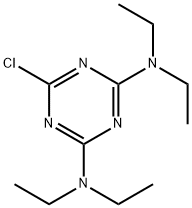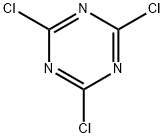Description
Chlorazine is a drug that belongs to the class of phenothiazines. It is used in the treatment of nausea and vomiting, as well as for sedation before surgery or endoscopy, but it also has some undesirable side effects. Chlorazine can be detected by chromatographic analysis and is biocompatible with polymer matrices. The drug has been shown to inhibit the growth of cells (in-vitro) by binding to cell nuclei. The chlorazine molecule has been found to have significant upregulation on α7 nicotinic acetylcholine receptors and pharmacological agents such as receptor activity. This drug may also have a matrix effect on chemical inhibitors.
Chemical Properties
Solid. Soluble in hydrocarbons, alcohols, ketones; insoluble
in water.
Preparation
Chlorazine is formed through a reaction between cyanuric chloride and diethylamine.
Mode of action
Their chief mode of action appears to involve carbohydrate metabolism. The chlorinated s-triazines inhibit starch accumulation by blocking the production of sugars. Similar behavior has been shown for the methoxy & methylthio-s-triazines. It has been reported that the s-triazines affect the tricarboxylic acid cycle with activation of phospho-phenyl pyruvate-carboxylase causing the disappearance of sucrose & glyceric acid with the formation of aspartic & malic acids.



